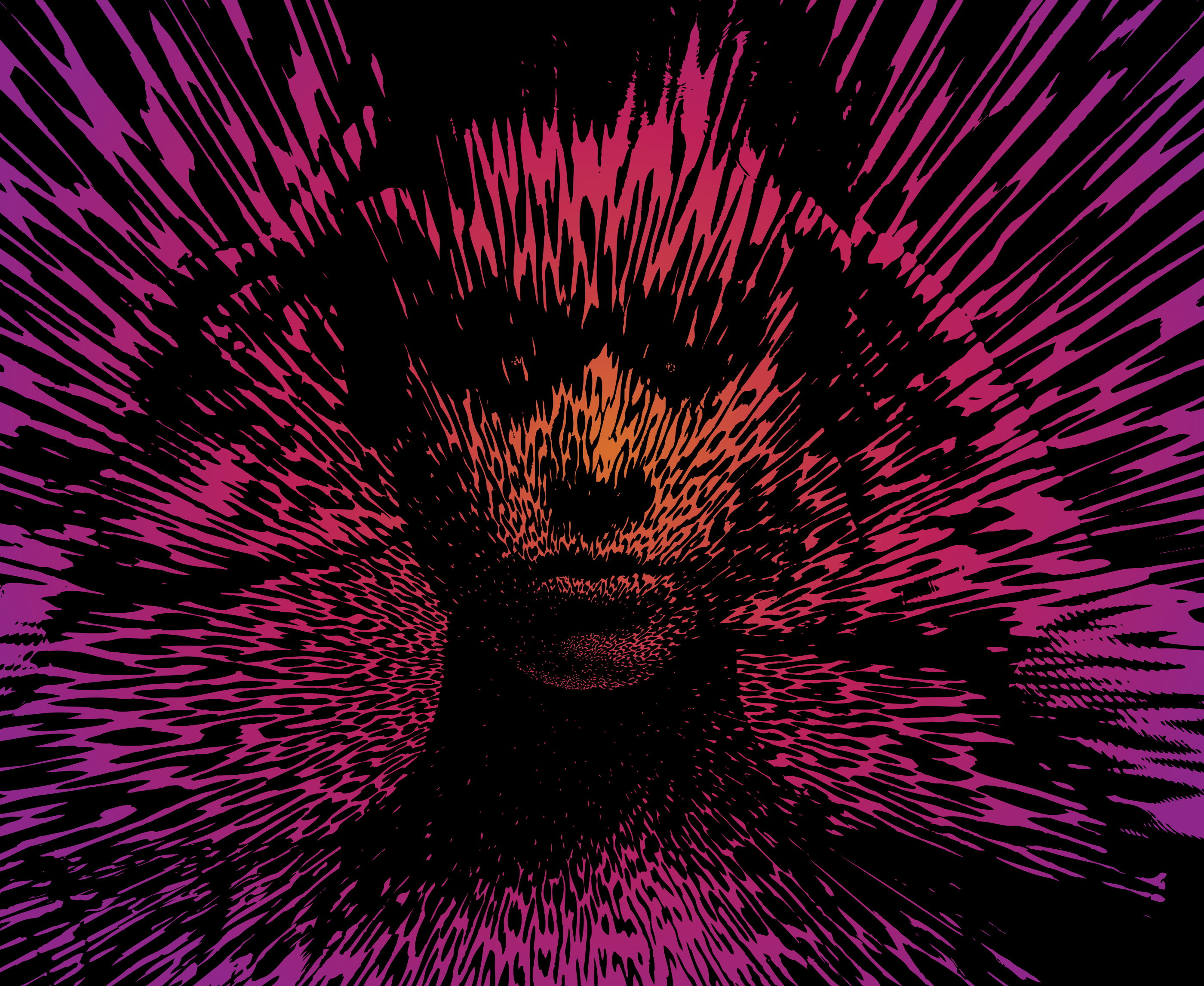The Long, Strange Relationship Between Psychedelics and Telepathy
Vice by Shayla Love 7/18/2022

It’s impossible to tell the story of psychedelics without telepathy. How will these experiences fit into psychedelics' mainstream, medical future?
In February of 1971, approximately 2,000 attendees at six Grateful Dead concerts at the Capitol Theater in Port Chester, New York saw this message projected onto a large screen at 11:30 PM: “YOU ARE ABOUT TO PARTICIPATE IN AN ESP EXPERIMENT.”
It was a test to see if people could use extra-sensory perception, or ESP, to telepathically transmit randomly chosen images to two “psychic sensitive” people, Malcolm Bessent and Felicia Parise, who were sleeping 45 miles away. Bessent was at the Maimonides Dream Laboratory in Brooklyn, while Parise slept in her apartment.
Art prints, selected at random, were projected at the Dead show, like The Castle of the Pyrenees and Philosophy in the Boudoir by René Magritte, or a visual representation of spinal chakras. Bessent and Parise described their dreams to two evaluators, an art therapy student and a divinity student, who then judged them based on their similarities to the images shown at the concert.
The Grateful Dead were chosen because the members of the band agreed to facilitate such an experiment, but also because those who conducted the study had determined that the audience would be especially primed for telepathic abilities, in part because of the state of mind they assumed the audience would be in.
In a paper summarizing the project, the authors wrote, “It was apparent to observers at the concert that the majority of the people in the audience were in states of consciousness that had been dramatically altered…these altered states of consciousness were brought about by the music, by the ingestion of psychedelic drugs before the concerts started, and by contact with other members of the audience.”
This is just one example of many of the historical overlap between psychical and paranormal research, and psychedelics. Some of the most storied names from the early psychedelic research period were also investigating ESP, telepathy, and precognition. Their interest in psychedelics wasn’t tangential, but directly related, as was the case in the Grateful Dead experiment. Many thought that psychedelics could induce these experiences, or bring about states where they were more likely to occur. Of course, the CIA’s MK-Ultra program, from 1953 to 1964, also pursued mind-controlling abilities of psychedelics; a psychiatrist, Donald Ewen Cameron, used LSD to do “psychic driving” experiments on people at McGill University’s Allan Memorial Institute.
Today, people continue to regularly report having anomalous or paranormal experiences while on psychedelics. David Luke, a psychologist at Greenwich University, has looked at surveys of those who used psychedelics, finding that the percentage of them who said they experienced psi phenomenon ranges from 18 to 83 percent of people depending on the group. Telepathy was the most common, but precognition, or having knowledge of an event before it happens, was also widely reported.
As psychedelics are researched for mental health conditions, and legal access to these drugs broadens, as it will in Oregon starting next year, it will be important to understand and recognize the intersection of these two topics: psychedelics and paranormal beliefs and experiences. Whether telepathy—however one wishes to define it—is veridical is something of a separate issue. But if psychedelics can lead to people believing in phenomena like telepathy, and potentially induce experiences that can challenge a person’s worldview—that’s something that people should be well informed about if they seek these drugs out for treatment.
On a larger scale, there is ongoing research into whether psychedelics do produce consistent shifts in beliefs, and how that might happen. Does it stem from the context in which people take psychedelics and external influences? Or is there something about the compounds themselves that leads people to step away from a materialist worldview in which telepathy doesn’t occur, to endorse a reality where transmitting thoughts, feelings, and images to another mind is possible?
“As psychedelics become more mainstream, we are opening up the breadth of the population who are getting access to them,” Luke said. “Once you take the cork out of the genie’s bottle, we cannot ignore these kinds of experiences.”
The word telepathy was coined in the 1880s by a British classicist named Frederick Myers, who helped found the Society for Psychical Research in London. (The word telepathy comes from the Greek root tele, meaning “from a distance,” and pathos meaning “feeling.”) He looked at thousands of case studies of people who—usually as they were close to dying—reported having communications with loved ones, and Myers would seek to confirm that those loved ones received the messages.
Many of the well-known names associated with the early days of psychedelic research were involved in experiencing and testing the parapsychological, including Albert Hofmann, Humphrey Osmond, Aldous Huxley, Gordon Wasson, Timothy Leary, Ken Kesey, Walter Pahnke, Al Hubbard, and Stanislav Grof, to name a few.
Much More:
https://www.vice.com/en/article/z34xa5/the-long-strange-relationship-between-psychedelics-and-telepathyhttps://www.youtube.com/watch?v=w5iB0AQ24r4